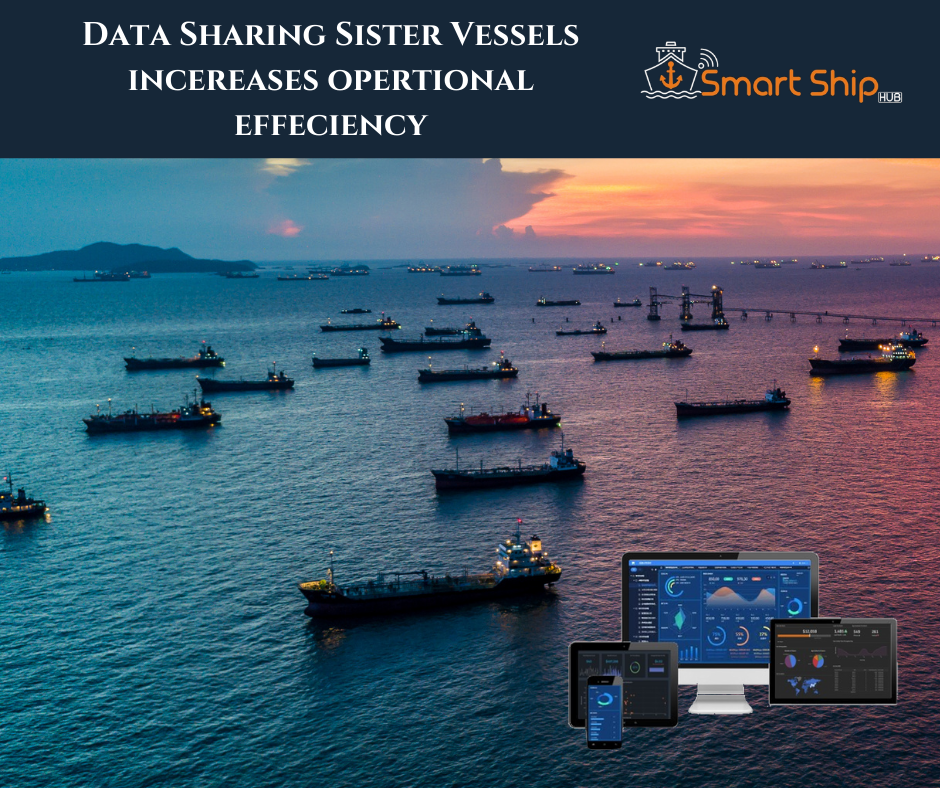
The maritime industry is undergoing and adopting lots of changes these years. Shipping operations are heavily relying on software-driven automation and control systems as a result of the digital revolution. This innovation is being complemented by multifaceted incorporations of calculation, networking, and physical procedures, key features such as safety, reliability, and availability.
While making a ship digitally connected to shore we are catering to a problem that occurs during the day to day operations while monitoring the performance of the vessels. This does not only include gathering data from various key areas of the ship like Bridge, Engine Control Room, Cargo control but also treating the data and interpretation of the received one, creation of vessel performance reports, creating charts on the dashboard, recommending the best possible route according to weather, fuel consumption and other reports.
Data sharing and creating a digital center for a fleet of sister vessels can help in creating an unparalleled experience. Exploring the possibilities of optimizing the operation with data from Vessel A and using the same data points to analyze and predict the performance of Vessel B would help in reducing huge operational expenses. Ways how data sharing can benefit and help in improving the efficiency
1. Optimizing Fleet with live tracking and managing performance of the vessels together.

The efficiency of a vessel is shaped when live tracking and monitoring of the parameters from the vessels is happening. Monitoring ME performance AE performance of the vessels and creating a pattern following trend line gives intelligence to the operators to understand the performance of the fleet. These are roughly 3000 parameters giving data every second, which is helping companies to understand the performance, consumption and address the maintenance, planned maintenance of the fleet. This is also adding with intelligence to make on time buying decision for the spares.
Addressing similar problems within the sister vessel by analyzing the data from vessel and creating a pattern for the fleet is adding value to the organization by saving time and money to and operational cost.. The real-time and historic database-fed model is a structured dataset for propelling properly and coordinating.
2. Planning the vessel voyages.
Owners of vessels can study the past voyage details of the vessel on route and can plan the optimization steps for the other vessel who is taking the same route. When an operator has all the data sets and real-time data tracked from the previous voyage, the operator has an upper hand and can take necessity steps to plan the voyage taking in consideration for the fuel consumption, ME, AE performance and weather details. This allows owners to set accurate KPI’s and increase the yield from the voyage.
The digital twin keeps you dynamically updated on asset conditions and makes it simple to understand operational parameters. The best way to understand this is offshore virtual oil rigs. You can virtually estimate risk levels, structural reliability, conduct tests to make it more productive by just analyzing data. It will help you optimize inspection regimes, making you aware of the cost of expenditure and complete documentation in an efficient manner, which usually lacks.
3. Situational Awareness

With the connected ships fleet operator are working and supporting the crew and sailing staff from shore with live data that is coming in. This has opened a wide lens for the operator and the shore team to track and support the team by taking charge of situation remotely.
Remote tracking and monitoring of alarms is an example for the shore team can take precautionary actions before any mishaps. Tracking every performance KPI on detailed level is helping the organization to scrutinize every alarm and plan the voyage with predefined KPI’s and also allowing them to check if the KPI’s are not violated.
4. End-To-End Supply Chain Optimization
When sister vessels functioning on similar KPI and are drawing more efficient ways of operation it gets easier to manage the entire supply chain for the fleet manager and to notice any anomaly happening within seconds of checking dashboards. Fleet managers can plan port operations based on the current sailing status of the vessels and can take informed decision by prioritizing the vessels that need his attention be it with spares purchasing, port activities, berthing schedules and loading and unloading procedures
5. Amplified Cyber secured network securing the vessels

The ship connectivity features, aided with enriched cyber-secured systems, is a strong model to face all kind of cybersecurity threats the fleet is exposed to. The digitalization shipping industry is experiencing has never before experience the need to get the vessels digitalized and with the amount of sensitive data that owners are looking for makes them more vulnerable to cyber attacks. Hence when the entire fleet is getting digitalized in a way it benefits the organization by adding layers of security on the ship on cloud and making them more secure than they were before.
This in fact can become a building block for a structured monitoring tracking and control the fleet and increase the efficiency by reducing the operational cost. This Smart Ship Hub model of Remote tracking is, supported with enriched cyber-secured systems, current digitalization trends are a robust model to deal with all kind of cybersecurity threats.
Smart Ship Pte. Ltd.
75 Meyer Road, #13-03 Hawaii Tower, Singapore
Singapore: +65 9894 6598 | India : +91 9607009295
Email: contact@smartshiphub.com
Singapore | India